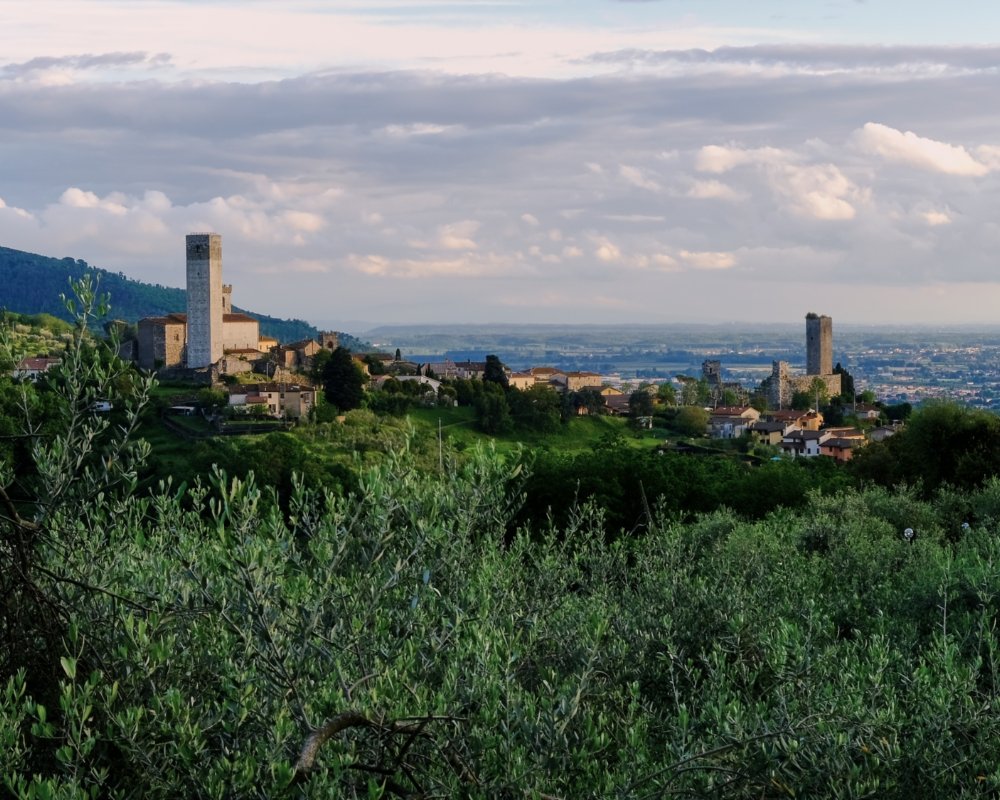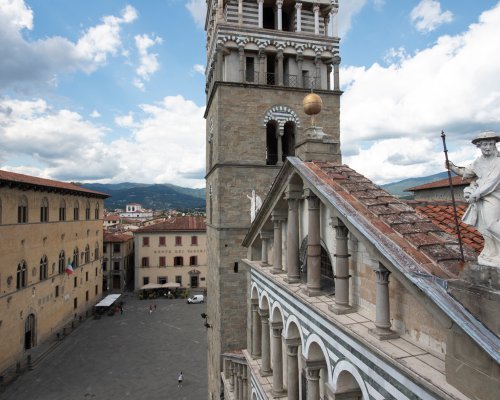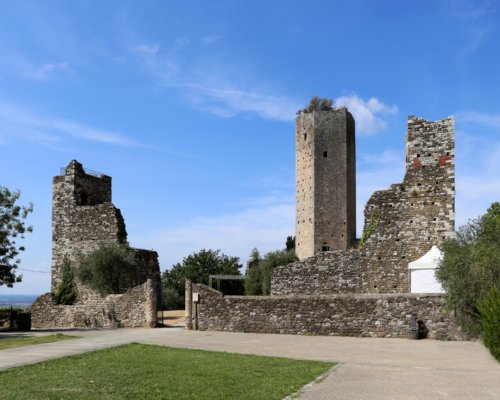


From Pistoia to Serravalle, in the footsteps of the old pilgrims
The Cammino di San Jacopo enables us to discover some of the most interesting Tuscan art cities, following a route which goes back hundreds of years and whose history has got lost in time.
Since the Middle Ages, pilgrims and merchants have travelled along these roads which became particularly famous thanks to the relic of Apostolo Jacopo, arriving in Pistoia from Galicia in 1144. From that moment on, the town became so prestigious that it was a compulsory stopover for Italian pilgrims on their way to Santiago de Compostela, and soon came to be called "little Santiago".
The Cammino di San Jacopo that has now been rediscovered and finally fully appreciated, connects Florence with Livorno (known as Leghorn), passing through Prato, Pistoia, Lucca and Pisa, and offering you some unforgettable scenery and views.
The tour begins with the magnificent Cathedral of San Zeno in the Piazza del Duomo which immediately immerses us in a historic atmosphere of devout religious worship.
After having admired the marquetry on the Silver Altar and having paid homage to the relic of San Jacopo kept inside a valuable reliquary, a masterpiece by the goldsmith Lorenzo Ghiberti, we set off for the Spedale del Ceppo, leaving behind us the Bell Tower, Town Hall, Palazzo dei Vescovi - the Bishop's Palace - and the Baptistery.
The Spedale del Ceppo, a medieval hospice, is an essential part of the history of pilgrimages: it was founded in the 13th century and is famous for its polychrome, terracotta frieze in the "della Robbia" style that decorates the porch.
The tour begins with the magnificent Cathedral of San Zeno in the Piazza del Duomo which immediately immerses us in a historic atmosphere of devout religious worship.
After having admired the marquetry on the Silver Altar and having paid homage to the relic of San Jacopo kept inside a valuable reliquary, a masterpiece by the goldsmith Lorenzo Ghiberti, we set off for the Spedale del Ceppo, leaving behind us the Bell Tower, Town Hall, Palazzo dei Vescovi - the Bishop's Palace - and the Baptistery.
The Spedale del Ceppo, a medieval hospice, is an essential part of the history of pilgrimages: it was founded in the 13th century and is famous for its polychrome, terracotta frieze in the "della Robbia" style that decorates the porch.
Leaving behind Pistoia's walls and following the Cammino di San Jacopo, we pass over the Ombrone river and then start climbing towards the hills until we reach the parish church of San Michele at Groppoli, in the middle of olive groves and infinitely peaceful.
Dating back to the 12th century, this Romanesque church is dedicated to San Michele Arcangelo and delights us with a lovely facade decorated in the Pisan style, with white and green marble tiles.
Leaving behind Pistoia's walls and following the Cammino di San Jacopo, we pass over the Ombrone river and then start climbing towards the hills until we reach the parish church of San Michele at Groppoli, in the middle of olive groves and infinitely peaceful.
Dating back to the 12th century, this Romanesque church is dedicated to San Michele Arcangelo and delights us with a lovely facade decorated in the Pisan style, with white and green marble tiles.
We continue along the Cammino di San Jacopo which takes us to important fortified hamlets going back to the Middle Ages. One which stands out is Serravalle Pistoiese, lying on the border between the Valdinievole and the Pistoia area.
The Torre del Barbarossa and the Rocca Nuova are remains of historic fortifications that we can still admire today, bearing witness to the considerable importance of this desirable area, as it was where many pilgrims used to pass through and which takes us back to the warmongering times of the Lombards.
Nearby, there was once an impressive building built by the Cavalieri dell'Ospedale di Gerusalemme (the Knights of the Jerusalem Hospital) “La Magione”, where pilgrims used to find a warm welcome; nowadays all that is left are the remains of its outside walls.
We continue along the Cammino di San Jacopo which takes us to important fortified hamlets going back to the Middle Ages. One which stands out is Serravalle Pistoiese, lying on the border between the Valdinievole and the Pistoia area.
The Torre del Barbarossa and the Rocca Nuova are remains of historic fortifications that we can still admire today, bearing witness to the considerable importance of this desirable area, as it was where many pilgrims used to pass through and which takes us back to the warmongering times of the Lombards.
Nearby, there was once an impressive building built by the Cavalieri dell'Ospedale di Gerusalemme (the Knights of the Jerusalem Hospital) “La Magione”, where pilgrims used to find a warm welcome; nowadays all that is left are the remains of its outside walls.